Often seen as simply a beach destination, Tunisia has a bucketful of surprising tourist attractions and things to do for those that venture off the sandy shores.
This is North Africa wrapped up into one bite-sized package.
There are alleyways of pastel-washed houses and crowded souk streets to explore in the cities; ancient ruins to discover out in the countryside; and the vast desert expanse of the Sahara to the south with its sweeping dunes, craggy mountains, and hidden, palm-tree-filled oases.
Tunisia was Rome’s breadbasket, and the cultural riches the Romans left behind are more than enough reason to visit. But the history of Arab Empires has also bestowed the country with some of the region’s most beautiful examples of Islamic architecture.
When you’ve craned your neck at Kairouan’s minarets and played gladiator at El Djem, it’s time to head into the Sahara to sample the raw, empty beauty of the desert.
The sun-soaked beaches of the Mediterranean coastline, fringed by palms and lapped by gentle waves, will still be waiting for you when you get back.
Discover where to go and what to see in this diverse country with our list of the top tourist attractions and places to visit in Tunisia.
1. El Djem Amphitheater
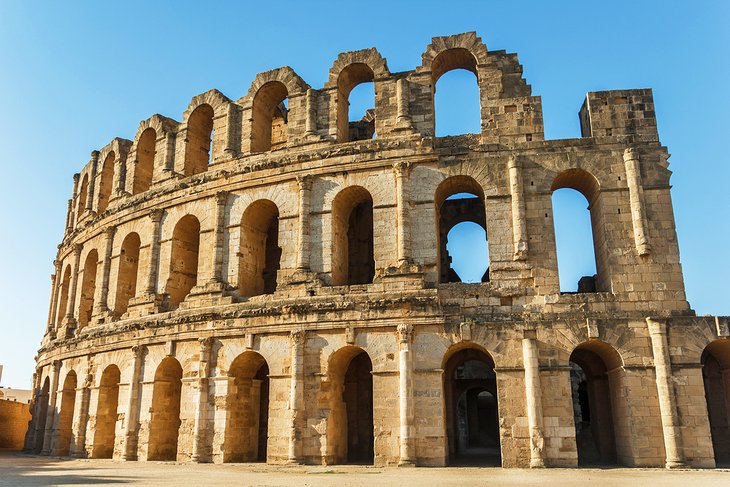
The walls of the mighty Roman amphitheater of El Djem dwarf the surrounding modern town.
This incredibly well-preserved Roman relic is Tunisia’s big sightseeing highlight, one of the most popular things to do on day trips from the coastal resorts, and one of the best examples of amphitheater architecture left standing in the world.
The monumental bulk of the walls are a reminder of Rome’s once-mighty grip across North Africa.
2. Djerba
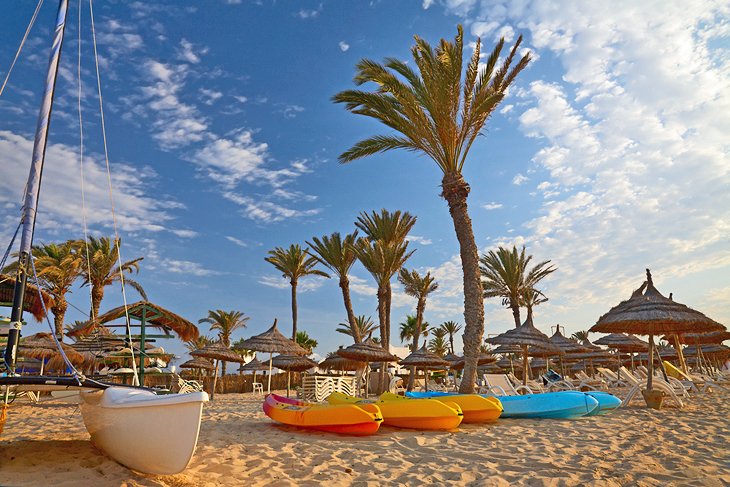
If you’re looking for the picture-perfect beach escape, then the island of Djerba checks all the right boxes.
The island town of Houmt Souk is the main point of interest off the beach, with an old town district that is a muddle of whitewashed houses.
Houmt Souk’s shopping is an attraction in itself, with plenty of handicraft vendors for browsing and haggling opportunities off the beach.
But it’s those sandy strips of shoreline out of town that are the island’s most popular highlight. Pristine and trimmed by date palms, the beaches are relaxing, get-away-from-it-all settings where summer daydreams are made.
3. Carthage
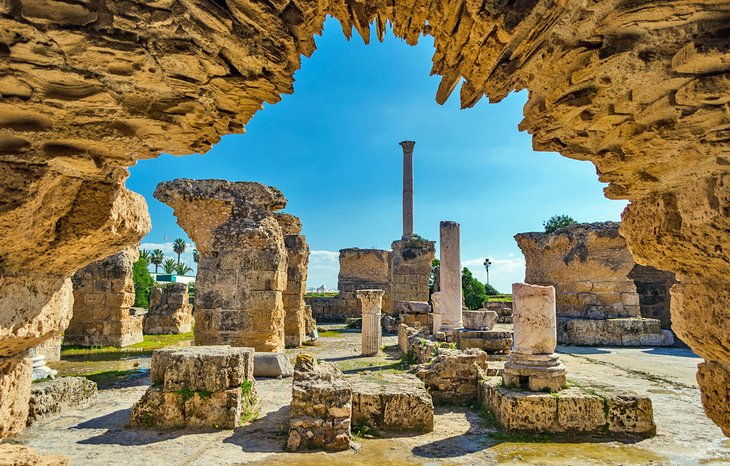
Once Rome’s major rival, Carthage was the city of the seafaring Phoenicians forever memorialized in the Punic Wars.
The atmospheric ruins of this ancient town now sit beside the sea amid the suburbs of Tunis, a warning that even the greatest cities can be reduced to rubble.
The ruins are extensive but spread out, and if you’ve been lucky enough to visit ancient city sites such as Ephesus in Turkey or Volubilis in Morocco, which are well-preserved, Carthage can seem quite underwhelming at first.
But these UNESCO World-Heritage-listed remnants are hugely important historically, and any tourist interested in North Africa’s ancient past shouldn’t miss a visit here.
4. The National Bardo Museum
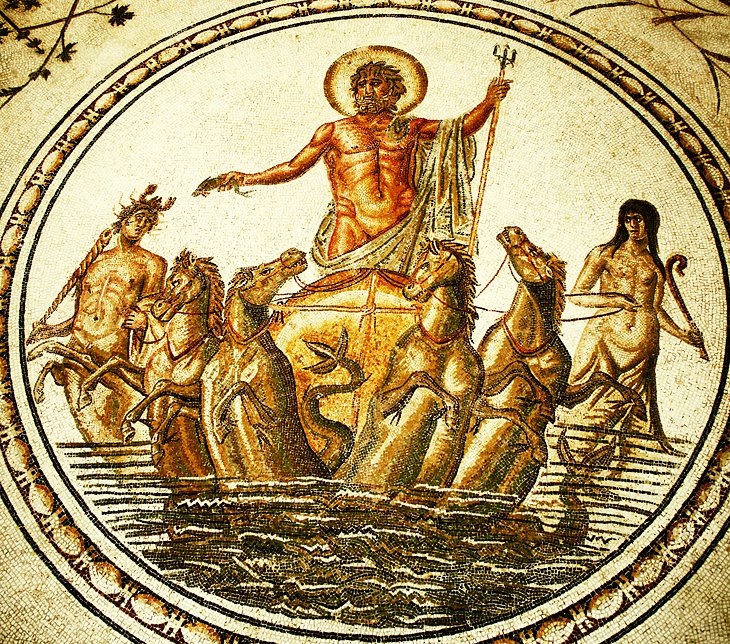
Even non-museum fans can’t fail to be impressed at the massive haul of beautiful mosaics exhibited inside the Bardo.
This is one of North Africa’s top museums, and it houses one of the world’s most important mosaic collections, all curated beautifully.
It’s a showcase of the dazzling, intricate artistry of the Roman and Byzantine eras, with pieces cherry-picked from every major archaeological site in Tunisia.
If you only have one day in Tunisia’s capital, Tunis, this museum should be high up on your to-do list.
5. Sidi Bou Said
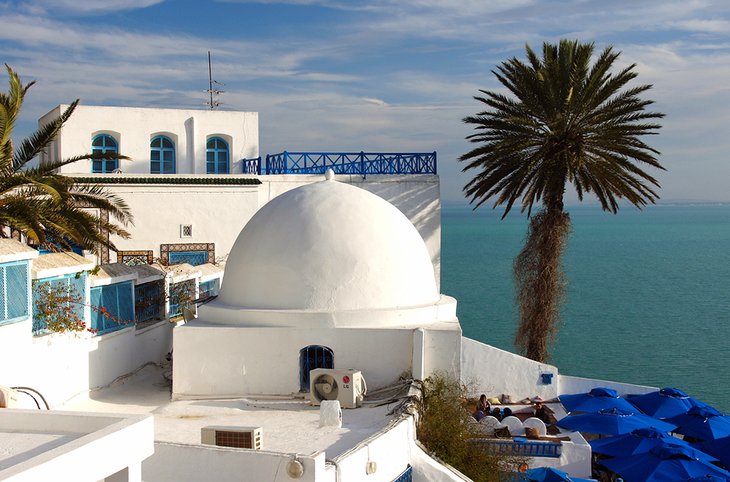
Impossibly cute, and amazingly photogenic, Sidi Bou Said is a clifftop village of petite dimensions that seem to have fallen off an artist’s canvas.
Unsurprisingly, artists have feted this little hamlet, now a high-class suburb of the capital Tunis, for decades.
The whitewashed alleyways, wrought-iron window frames, and colorful blue doors are Tunisian village architecture at their finest, while the Mediterranean backdrop is the cherry on top.
This is a place to while away a lazy afternoon, simply soaking up the laid-back atmosphere and maybe indulging in a spot of shopping at one of the many local artisan and handicraft stalls.
6. Grand Erg Oriental
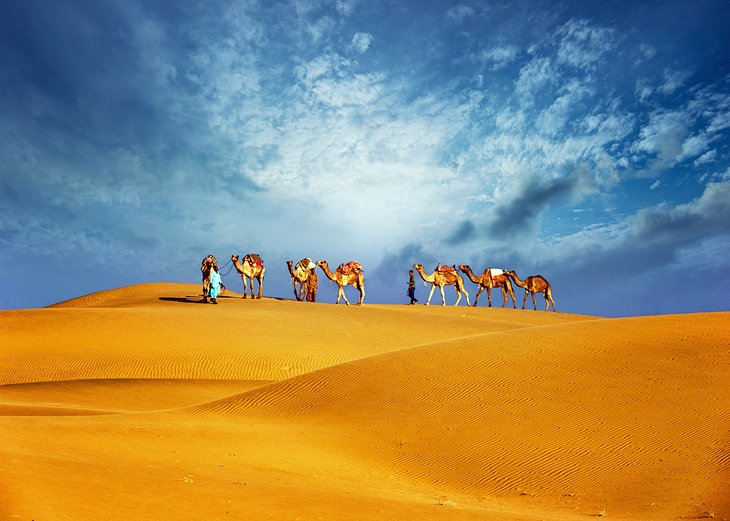
Tunisia’s vast Sahara covers much of the country’s interior, and the most beautiful corner of the desert is the field of sand dunes known as the Grand Erg Oriental.
These poetically beautiful dunes are a surreal and gorgeous landscape of huge waves, shaped by the ever-shifting desert sands.
For many visitors, this is an adventure playground for riding dune buggies and camel treks, but nothing tops the simple pleasure of sitting atop one of these mammoth sand mountains and watching the sun set over the Sahara.
The nearest center is the desert town of Douz, from where you can organize camel, hiking, and 4WD excursions and multi-day trips to the dunes.
7. Bulla Regia

Tunisia has no shortage of Roman ruins, but Bulla Regia near Tabarka is the country’s most interesting and intriguing site.
Here, the Roman inhabitants coped with the harsh summer climate by ingeniously building their villas underground, which has left the city houses incredibly well preserved today.
For history lovers, this is a unique opportunity to walk through actual Roman houses, with their walls still intact, and with some of the expansive floor mosaics still in-situ. It’s a glimpse of the residential life of the ancient world that you often don’t see.
8. Kairouan
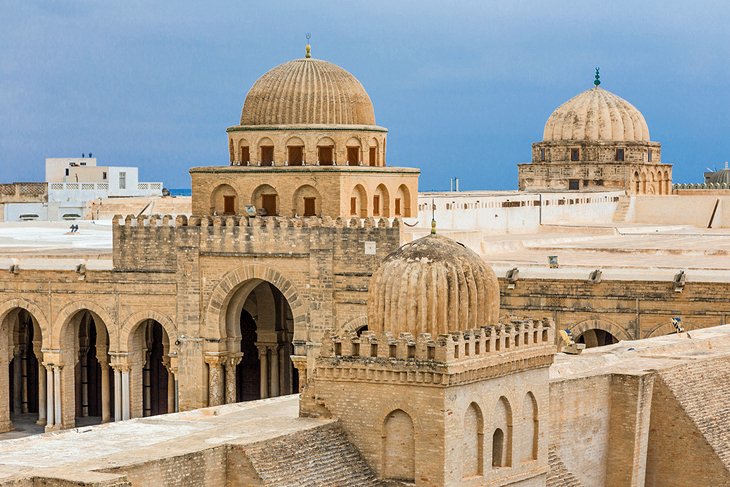
With mosques, madrassas, and tombs aplenty, Kairouan has more than its fair share of monuments as the fourth most important city for those of the Muslim faith.
The Arabic architecture here is truly inspiring, and the skyline is full of skinny minarets and bulky domes. But it’s probably the back alleys of the city’s medina that steal the show.
With narrow, maze-like lanes lined with crumbling colorful houses, Kairouan’s old town has an enchanting, lost-in-time atmosphere that is a true highlight of a visit here.
9. Sousse Medina
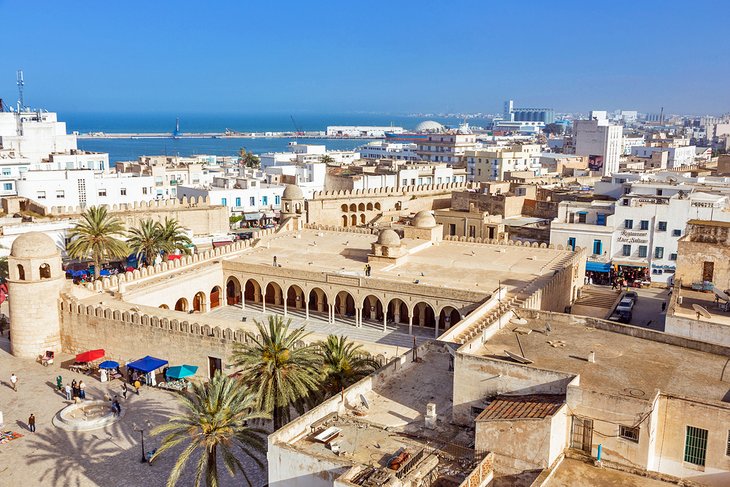
Overlooked by the mighty fortifications of the ribat and kasbah, the medina in Sousse just begs to be explored.
This lovely old town district is a warren of looping lanes, rimmed by whitewashed houses, and a shopping paradise with a tempting selection of ceramics, leatherwork, and metalwork on display.
Away from the stalls along the bustling souk streets, the quiet and rambling back alleys, dusted in white and blue, are a charming place to dive in and sample local life.
10. Chott el Djerid
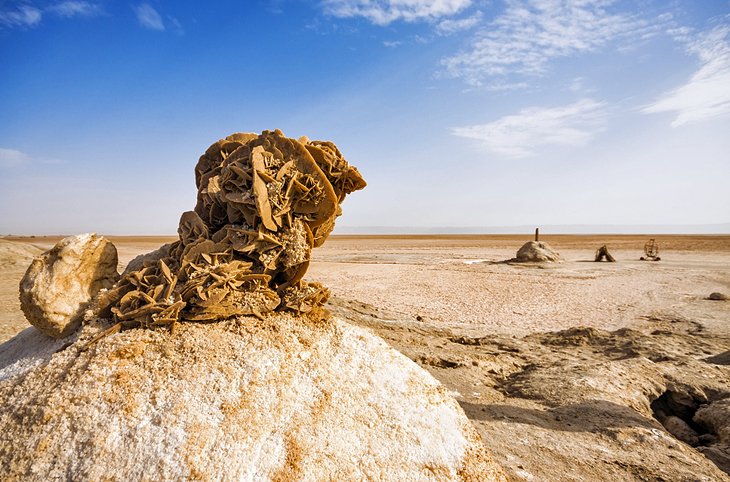
This sprawling salt pan (most easily reached on a day trip from the desert town of Tozeur) is a desolate and otherworldly scene that wows all who visit with its stark and brutal beauty.
The scenery here depends on the season you visit.
In summer, the moonscape surroundings of the Chott el Djerid are a storybook panorama brought to life, filled with shimmering mirages on the horizon and jigsaw puzzle pieces of blindingly white, cracked land under foot.
During winter, though, the basin partially fills with water, creating a bizarre lake amid the desolate surrounding desert plains.
A sightseeing trip here proves that nature produces much weirder landscapes than you could ever imagine.
11. Hammamet
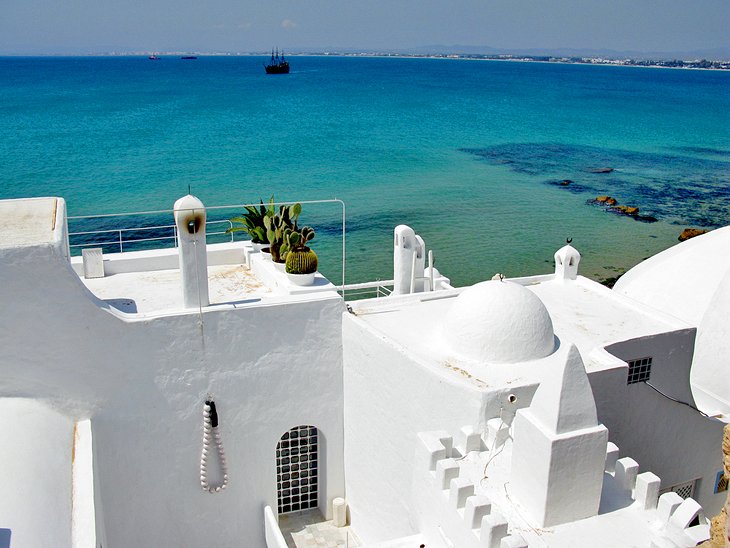
Hammamet is all about the beach. This laid-back town on the Cap Bon Peninsula is Tunisia’s top sun-and-sea resort, dedicated to easygoing beach vacations.
The town itself, with its pretty white buildings set beside a bright blue sea, has bundles of Mediterranean charm, which woos all who come to sunbathe on the soft, white sand.
For many who come here, off-the-beach pursuits total up to nothing more strenuous than gentle strolls in the medina (old town) and a spot of shopping in the restored old town souks.
It’s a no stress kind of place that sums up the pleasures of Tunisia in one pretty package.
12. Dougga
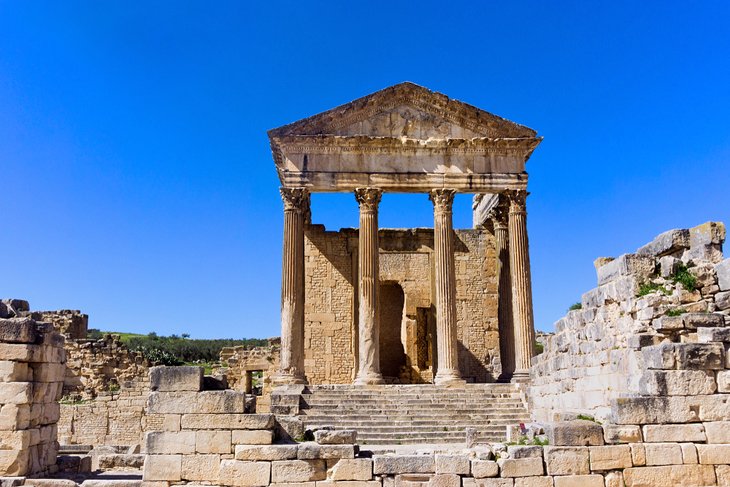
Easily reached on a day trip from both the Tunisian capital of Tunis and the northern beach town of Tabarka, Dougga is one of the most important Roman sites in North Africa.
The site is feted by travelers both for the well-preserved state of its main monuments and its tranquil rural setting amid rolling countryside.
It may seem far off the main routes today, but this expansive, hilltop site was once a thriving town, first settled in the 6th century BCE and today containing remnants leftover from all its major historical eras, from Berber and Punic to Roman and Byzantine.
The Roman-era ruins here are the grandest of Dougga’s monuments.
Come here to admire the Roman Theater, Forum, and numerous temples with their pillars still raised in place but don’t forget to also explore the numerous bath complexes and remains of villas.
13. Tunis Medina
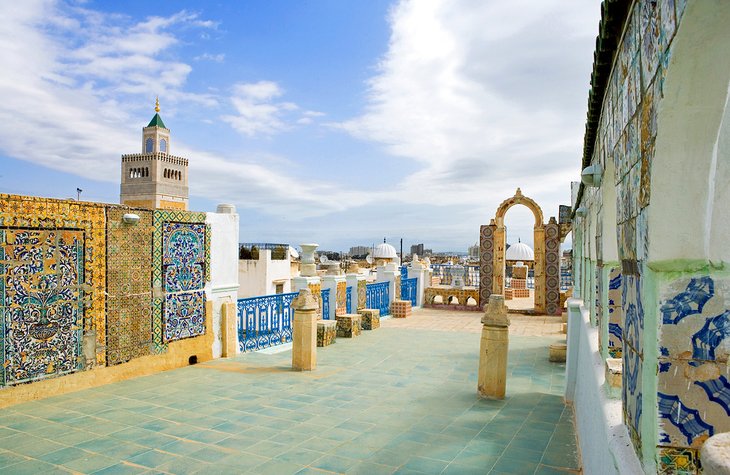
Although Tunisia’s capital is mostly visited to view the two major tourist attractions of Carthage and the Bardo Museum, the medina district of central Tunis is well worth spending an extra night in the city for.
The winding alleys of this old town neighborhood, with their souks (shopping streets), mosques, and monuments, are fun to explore.
Don’t miss visiting the rooftop of the Umayyad-era Olive Tree Mosque, the medina’s most famous landmark, while wandering the medina, and make sure to seek out the clutch of small museums and restored dars (medina mansions) hidden within the narrow lanes. If you’re short on time, Dar Hussein Palace is the top pick.
14. Tozeur
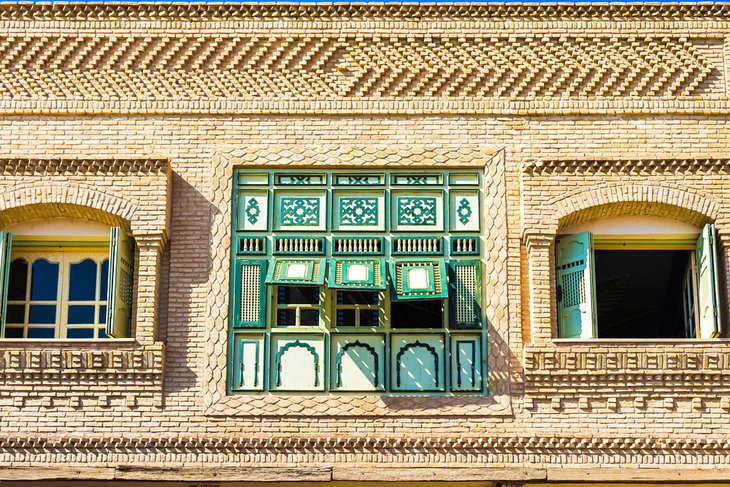
Tozeur is a desert oasis town, sitting in the country’s southeast. For many visitors, it’s a practical base for the tourist attractions of the Sahara with the chott el djerid salt pans, sand dune vistas, and the oases of Tamerza and Chebika all within day-tripping distance from town.
Tozeur town is an attraction within itself, though, rimmed by vast date-palm gardens and home to an interesting medina district brimming with examples of the town’s traditional decorative brick architecture.
Although it’s a long journey across a stark desert plateau to get here (Tozeur is 211 kilometers west from the coastal city of Gabes), it’s well worth it for the laid-back desert outpost atmosphere and the swag of Sahara attractions to explore on its doorstep.
15. Matmata

This Berber village, with its troglodyte housing, was made famous when one of the dwellings (the Hotel Sidi Driss) was used as a location during the filming of the original Star Wars movie.
Matmata’s traditional troglodyte-style housing is its main attraction. To escape the extreme heat of the area’s arid plateau, locals dug deep into the ground, excavating a large circular pit below the surface, which would act as a courtyard, and then burrowed into the pit walls to hollow out cave rooms for their living spaces.
Today, some of the houses are open for visits and/or provide accommodation for travelers who want to experience a night of cave-living.
Matmata is in south central Tunisia, 43 kilometers southeast of Gabes and 108 kilometers northwest from Medinine.
16. Ribat of Monastir
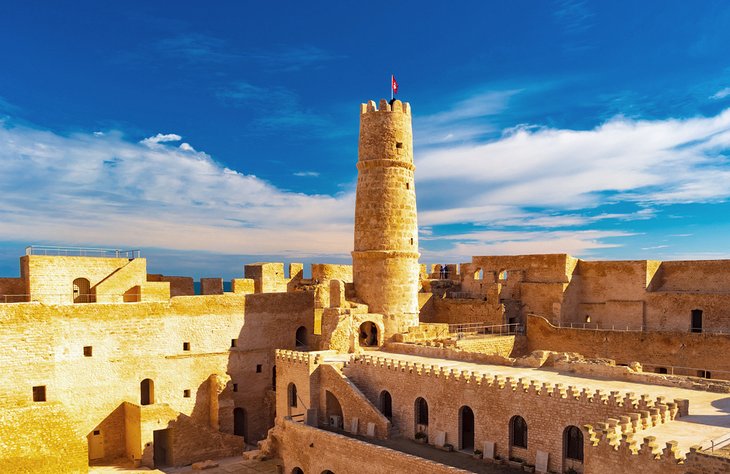
One of Tunisia’s most recognizable monuments, the Ribat of Monastir was the earliest fortress built in Tunisia during the 8th-century Abbasid conquest, and one of the earliest in the entirety of North Africa.
This sea-fronting fortress is an exceptional example of medieval defensive architecture, with its main features of high crenellated walls, watchtowers, and internal courtyards.
For many visitors, the ribat is most famous today because of its use as a film location during the mid-20th century, including its starring role in Monty Python’s cult classic Life of Brian.
As Monastir is only 23 kilometers southwest from Sousse, the ribat is easily visited on a day trip from the city.
17. Ancient Sufetula
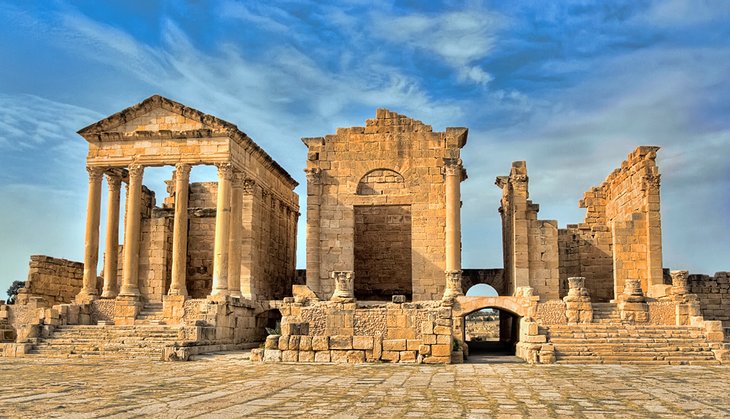
The Roman ruins of Sufetula in the small town of Sbeitla are too out of the way to attract the tourist crowds, but it’s well worth making the journey.
Known for its exceptionally well-preserved Roman Forum building, as well as a large number of preserved Roman-era public buildings, including a triumphal arch, public bath, and temples, Sufetula is one of the best places to visit in Tunisia to imagine the Roman world.
Founded by the Roman Emperor Vespasian, Sufetula prospered due to its cultivation of olives for the empire. Later, during the Byzantine era, it also enjoyed further importance becoming a bishopric.
Today the archaeological site sits right on the northern edge of modern Sbeitla town in central Tunisia. There’s only a handful of accommodation choices in town, but it’s possible to day trip to Sbeitla from Kairoaun, 107 kilometers to the northwest.
